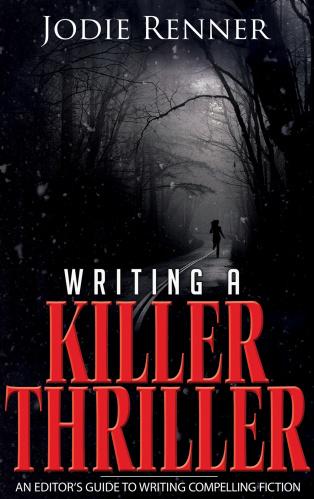Your thriller is coming along really well. You’ve written a first draft or are well into it, and you’re starting to think of actually letting others read it. Way to go! Now it’s time to go back and revise your opening pages to make them as riveting and intriguing as they can be.
I can’t emphasize enough how critical your first pages are. They can literally make or break your sales for that book – and maybe future ones. Why? Because after glancing at the front and back cover, potential readers, agents, publishers, and buyers will read your opening page or two to decide whether or not to buy your book. Readers are less and less patient, and with all the excellent books out there, if they’re not intrigued by the first few pages, they’ll reject yours and go on to another.
As James N. Frey says, “A gripping opening is not simply a good thing for your story. It’s absolutely essential.”

So what are the essential ingredients of a gripping opening?
Your first page – in fact, your first paragraph – needs to immerse your readers in the story right away, engage them emotionally, and hook them in so they not only want to but need to continue.
For that to happen, several factors come into play.
~ Tell us whose story it is. First, readers want to know right away who’s the protagonist, the one they’ll be rooting for. Put is in the head of the main character in the first sentence, certainly the first paragraphs. Readers expect that the first person they meet is the one they’ll identify with and bond with, so start right out in the point of view of your lead character.
~ Situate us right away. And readers want to know immediately where and when that first scene is taking place, and what’s going on. So be sure you’ve answered the four W’s within the first few paragraphs: who, what, where, and when – and in an engaging way. Don’t confuse or annoy your readers right off the bat by making them wonder who’s the main person in the story, what’s going on at that moment, and where and when it’s happening.
~ But not in a happy scene. Introduce some tension and conflict right away. Your lead character wants or needs something and it’s not happening. She’s starting to get stressed because…
~ Make us care about your protagonist. Give readers a hero they’ll really want to root for and worry about. He should be sympathetic, interesting, and charismatic, but with inner conflict and baggage. Show us his hopes, dreams, worries, and fears as soon as you can.
~ Give us characters in action. Don’t start with your heroine alone, contemplating her life. That’s too static and just not engaging or dynamic enough. Put her in a compelling scene with someone significant in real time, with tension, dialogue, actions, and reactions. That way, we get a feel for her personality and a glimpse into her world and her place in it.
~ Avoid neutral, detached descriptions or explanations. Don’t address the readers as an omniscient narrator, telling us about the setting, the weather, or the hero from afar. In fact, don’t tell us anything on the first pages – show us what’s going on through the actions and dialog of your characters. Filter the descriptions of your hero’s surroundings through his perceptions, reactions, mood, and attitude.
~ Set the tone for the whole book. Your opening paragraphs need to establish the overall tone and mood of this story. Readers need to get a feel early on as to what they’re getting into, not only in terms of character and plot but also from your overall approach and attitude. They don’t want any nasty surprises later on.
~ Upset her world. Then, within the first chapter, throw your main character a major curveball. Show something or someone threatening her or people close to her, or other, innocent people. Force your hero to make some difficult, even agonizing decisions. And keep us in her head so we feel her worries or fear or anger or confusion, followed hopefully by strategizing, courage, determination, and actions.
~ Make us relate. For maximum reader involvement, introduce a situation of injustice that implicates your protagonist as primary problem-solver. Injustice is something all readers can identify with, and they want to vicariously fight it through a resourceful, courageous, determined hero or heroine.
~ Bring in the villain. Finally, introduce your adversary within the first two chapters. It’s best to put us right in his point of view, but I advise against revealing his identity right away – keep the readers guessing along with the hero, for more tension, suspense and intrigue.
To recap: So think of a gripping, stressful opening situation for your protagonist that creates empathy and identification for him and raises intriguing story questions. Then show that scene in real time, with tension, action, and dialogue, through the eyes and ears and heart of your protagonist.
And write tight. Don’t rev your engines at the beginning or let your opening sequence drag on. Get in there and be ruthless with your cutting, taking out anything that doesn’t drive the story forward or contribute to characterization. Start late and end early.
That’s a tall order, all for a first page. But the business of thriller writing is extremely competitive, so your opening needs to be stellar to stand out in the crowd. Don’t waste it with long, meandering descriptive passages about the scenery or weather, or with a character waking up in the morning thinking about his life. And whatever you do, don’t use those precious first pages to explain anything to your readers. This is where “show, don’t tell” is crucial.
Readers and writers – Do you have any other suggestions for a killer thriller opening?

Jodie Renner, a freelance fiction editor specializing in thrillers, has published two books to date in her series, An Editor’s Guide to Writing Compelling Fiction: WRITING A KILLER THRILLER, with the updated, expanded edition now available in e-book and paperback on Amazon; and STYLE THAT SIZZLES & PACING FOR POWER, available in paperback, for Kindle, and in other e-book formats.
For more info, please visit Jodie’s author website or editor website.
